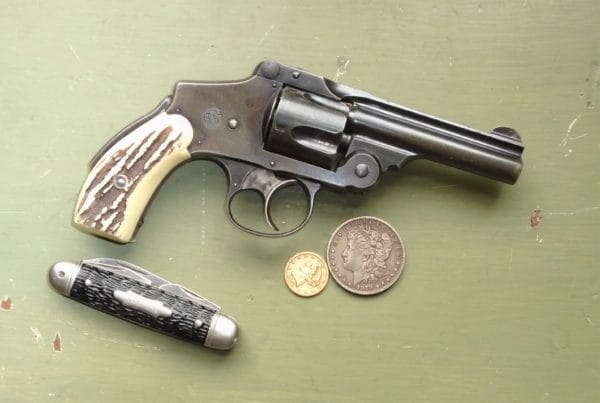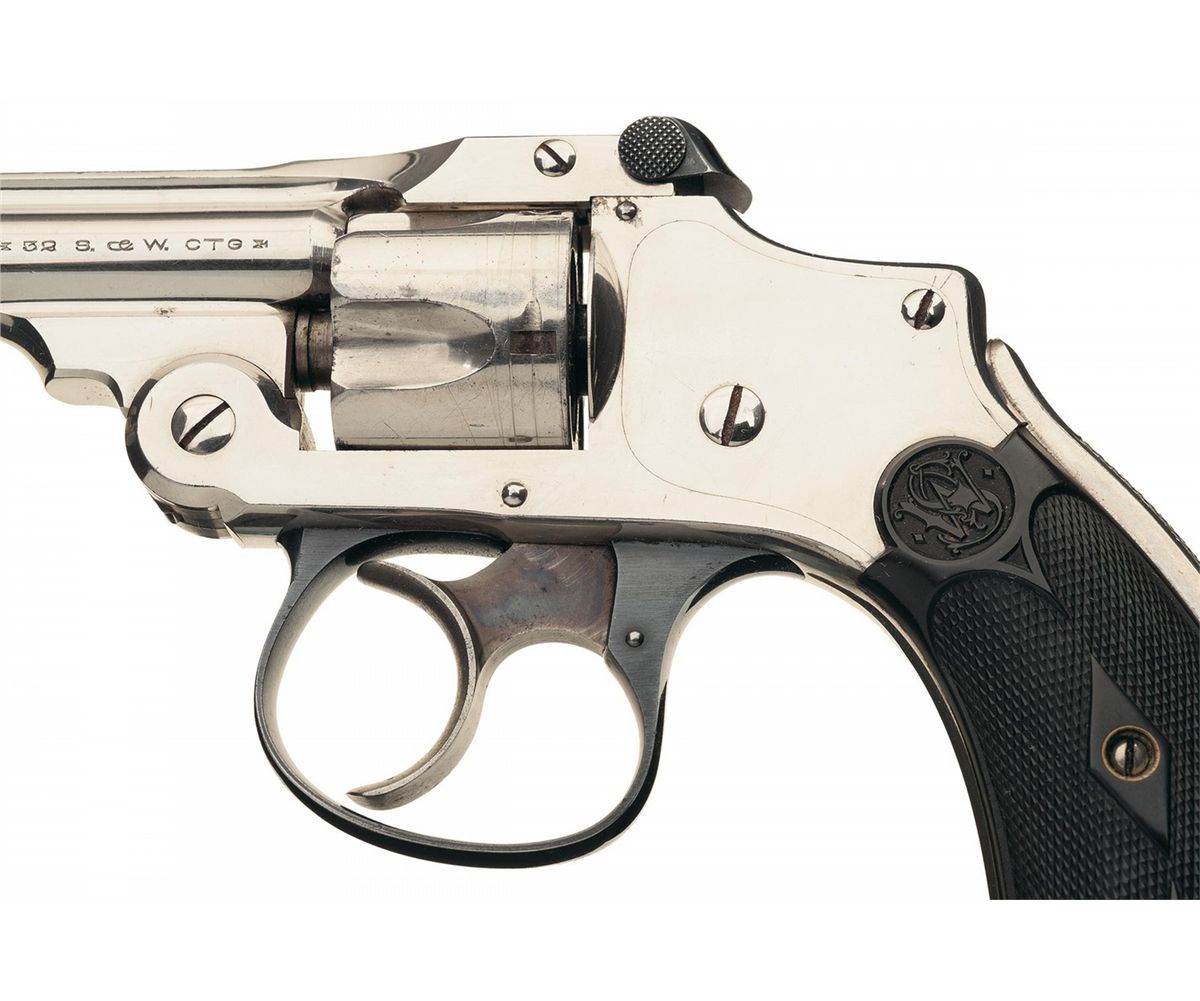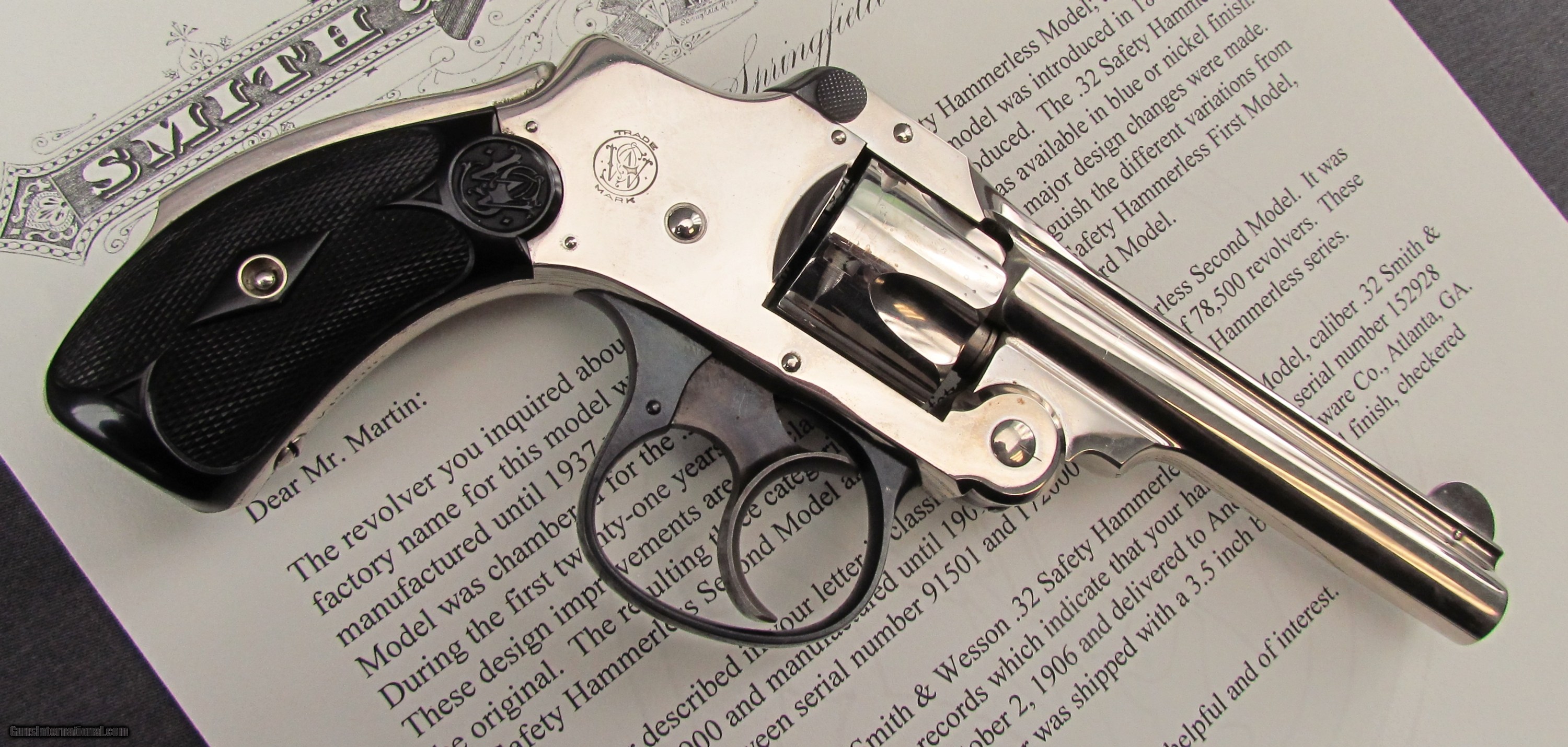- Smith & Wesson Hammerless 38
- Smith Wesson Safety Hammerless Serial Numbers
- Hammerless Smith And Wesson
- Smith And Wesson Safety Hammerless Serial Numbers
Also known as the Lemon Squeezer, this is the third model.32 Safety Hammerless or 'lemon squeezer'. Single line address with Maltese crosses marked on top of the rib, and '+32 S.&W. CTG+' on the left side of the barrel. The Second Model is distinguished by the 'T' shaped barrel latch. SMITH & WESSON.32 Safety Hammerless (aka.32 New Departure or.32 Lemon Squeezer) 1st Model.32 Safety Hammerless (aka.32 New Departure or.32 Lemon Squeezer) 1st Model Push button latch serial number 1- 91417. Smith made two different kinds of 'break open' guns. 'Tip ups', of which the model 1 1/2 is one, and 'Top Breaks'. The difference is the 'top breaks' had the hinge on the bottom of the frame and it hung down like a double barrel shotgun, and the cylinder stayed on the gun, while the 'tip ups' has the hinge at the top of the frame, and the barrel swung up and on top of the frame, pointing back.
In 2006, the Model 37 was dropped from Smith & Wesson's catalog. Serial number 337 was shipped to J. Edgar Hoover and is engraved with his name. In 1958, Spanish manufacturer Astra developed a high quality revolver line based on this weapon, under the name of Astra Cadix, Astra 250 and Astra NC6. There were only 100 of these 38 Safety Hammerless Revolvers sold to the U.S. Government in May of 1890, making these one of the most difficult and desirable of all U.S. The revolvers are Third Models, although they are in the Second Model serial number range, 41333 - 41470 (note serial number of this revolver). The revolver has the push button barrel release, two line address.
| Smith & Wesson Model 2 (Single Action) | |
|---|---|
| Type | Revolver |
| Place of origin | United States |
| Service history | |
| Used by | United States |
| Production history | |
| Manufacturer | Smith & Wesson |
| Produced | 1876-1911 |
| No. built | approx. 25,548 (1st model), 108,255 (2nd model), 97,000 (3rd model) |
| Specifications | |
| Caliber | |
| Action | Single Action |
| Feed system | 5-round cylinder |
| Sights | Fixed |
The Smith & Wesson Model 2, also referred to as the Smith & Wesson .38 Single Action, was Smith & Wesson's first .38 caliber revolver. Chambered in .38 S&W, its cylinder held 5 shots. The single action version was produced in three varieties from 1876 through 1911, with total production exceeding 223,000.
The Smith & Wesson Model 2 was a 'top-break', with the barrel release catch located on the top of the frame, just in front of the hammer.[1] It was a larger caliber version of the third model of the Smith & Wesson Model 1 1/2.

Single Action[edit]
In 1876, Smith & Wesson Model 2 debuted in a single-action format, meaning the hammer had to be cocked manually to set the trigger in order to fire the revolver. These revolvers were available in nickel or blued finishes.
1st Model[edit]
The first model of the .38 Single Action can be identified by its smooth barrel (lacking fluting), and the long extractor shroud similar to the Smith & Wesson Model 3 Russian pistol, which lent it the nickname 'Baby Russian'. It had a spur trigger and lacked a trigger guard. Models were available in blued or nickel-plated finishes, and the majority were produced with 31⁄2-inch or 4-inch barrels, although barrels as long as 7 inches were sold.[1]

Smith & Wesson Hammerless 38
Serial numbers range from 1 through to 25,548 between 1876 and 1877. This pistol was used by the Baltimore Police Department from 1876 to 1917 and such revolvers are marked 'City of Balto'.[1]
2nd Model[edit]
The second model of the 38 Single Action used a shorter and more efficient ejection and extraction system and lack the shroud of the 1st model. It was produced in blued steel and nickel-plated versions, with most models having a 31⁄2-inch or 41⁄2-inch barrel. Rare versions had barrels of 6, 8 and 10 inches in length.[1]
These revolvers had a spur trigger, lacked a trigger guard and were serial numbered consecutively from 1 through 108,255.[2]at least one second model was produced with a 5 in barrel , with last three numbers of sn '007'.
3rd Model[edit]
The third model of the 38 Single Action was made from 1891 to 1911 and is often known as the 1891 Model, Model 01 or the Model of 91 as the latter is stamped on the top of the barrel. This version used a standard trigger and a trigger guard, but 2000 of these revolvers were made for the Mexican government with the spur trigger and no guard and are referred to as the 'Mexican Model'.[3]
Double Action[edit]
| Smith & Wesson Model 2 (Double Action) | |
|---|---|
The middle revolver to the left is a Model 2 (Double Action 38) revolver. | |
| Type | Revolver |
| Place of origin | United States |
| Production history | |
| Manufacturer | Smith & Wesson |
| Produced | 1880-1913 |
| No. built | approx. 328,645 (32 S&W), 554,000 (38 S&W) 59,400 (Perfected Model) |
| Specifications | |
| Caliber | .32 S&W, .38 S&WBlackpowder |
| Action | Double Action |
| Feed system | 5-round cylinder |
| Sights | Fixed |
In 1880, Smith & Wesson offered the Model 2 in a double-action format, whereby a single squeeze of the trigger both cocked the hammer and fired the revolver. These revolvers are easily recognizable by their fully enclosed trigger guard. The first such revolvers made by Smith & Wesson. These revolvers were available in nickel or blued finishes and a smaller version was offered in .32 Smith & Wesson.
Double Action 32[edit]
The Model 2 in .32 S&W was made in 5 iterations. The initial version was a batch of 30 revolvers that were the first of such made by Smith & Wesson with a trigger guard in 1880. These models were deemed to be sub-par and did not leave the factory until 1888. The second version was improved and a total of 22,142 of these were manufactured until 1882. The third variant made from 1882 until 1885 included 22,232 revolvers. The fourth version was made from 1885 until 1909 and included 239,600 models. The final fifth variant included 44,641 pieces and was discontinued in 1919.[1]
Smith Wesson Safety Hammerless Serial Numbers
Double Action 38[edit]
The Model 2 in .38 S&W was made in 5 iterations. The initial run consisted of 4000 revolvers in 1880. The second version was improved and a total of 115,000 of these were manufactured from 1880 until 1884. The third variant made from 1884 until 1895 included 203,700 revolvers. The fourth version was made from 1895 until 1909 and included 216,300 models. The fifth variant included 15,000 pieces and was discontinued in 1911. The third and fourth versions saw use as a police revolver for the cities of Cleveland, Ohio, Boston Massachusetts and Baltimore, Maryland as well as for security guards at the American Express Company.[1]
The final version of these top-break double-action 38's was the Perfected Model. This version used a top break with a sideplate thumb latch and was made from 1909 until 1920 for a total of 59,400 revolvers. This model was used by Floyd Allen in a courthouse escape attempt in 1913.[1]

Smith & Wesson Safety Hammerless[edit]
The Smith & Wesson Safety Hammerless is a double-action revolver that was produced from 1887 to 1940 by Smith & Wesson. Based on the Model 2 double-action design, the revolver incorporated an internal hammer and an external grip safety on its back-strap. It was chambered in .32 S&W and .38 S&W calibers; these revolvers were discontinued prior to World War II, being eclipsed by the stronger hand-ejector models.[1]
Hammerless Smith And Wesson
References[edit]
- ^ abcdefghSupica, Jim; Nahas, Richard (3 January 2007). Standard Catalog of Smith & Wesson. Iola, Wisconsin: F+W Media, Inc. pp. 77–84. ISBN0-89689-293-X.
- ^Chicoine, David (2005). Antique Firearms Assembly/Disassembly: The Comprehensive Guide to Pistols, Rifles & Shotguns. Iola, Wisconsin: Krause Publications. p. 203. ISBN0-87349-767-8.
- ^Ramage, Ken (23 September 2008). The Gun Digest Buyers' Guide to Guns. Iola, Wisconsin: Krause Publications. p. 815. ISBN1-4402-2433-1.